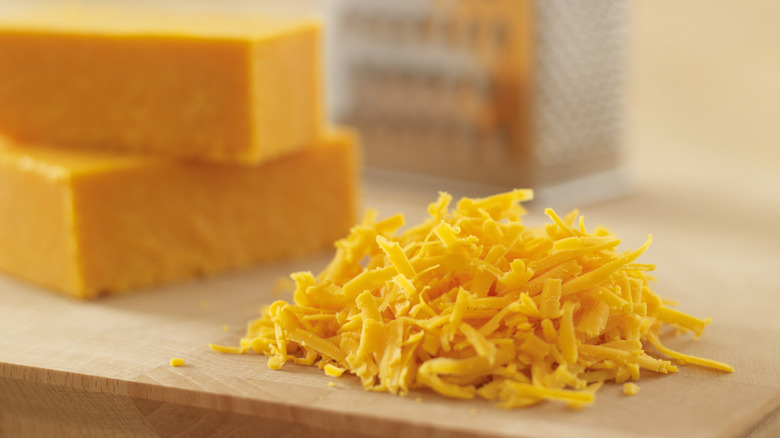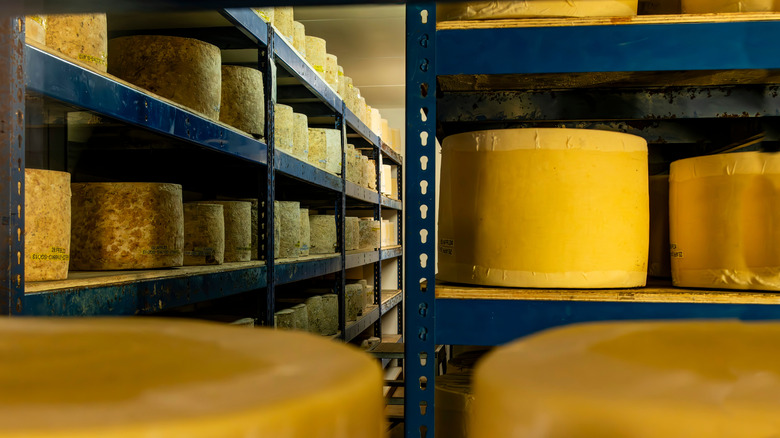One Of The First Cheeses In America Is Still Around Today
Picture a classic American dish, and more often than not, cheese is a component. Whether it's the ubiquitous cheeseburger, the iconic Carbone's chicken parm, or a plate of Tex-Mex style enchiladas covered in cheese, the foodstuff finds its way into a variety of regional favorites. Accordingly, the creation of cheese stretches throughout all of American history. And among the first varieties is cheddar.
Emerging in 12th century England, this iconic bright orange cheese has been America's most produced type since the mid-19th century. Interlinked with dairy regions in New England and the Midwest, the cheese has evolved into regional varieties with distinct flavors and appearances. There are the longer-aged Vermont and New York cheddars, which offer a sharp, pungent taste, or the vibrantly-colored Wisconsin-style cheddars that are varied in aging times. Cheddar is a product with a storied tradition, revealing an important part of America's culinary legacy.
Cheddar-making in the U.S. dates back centuries
Cheddar comes with several attributes that help explain its popularity. Crafted by way of the eponymous cheddaring process, the foodstuff transforms milk proteins into a form less prone to spoilage. The cheese is aged to decrease water content while concentrating the flavor. Especially prior to refrigeration, this production process allowed for a delicious yet shelf-stable cheese. Covered in a rind and additional protective coating, such qualities set the stage for cheddar production in 19th century America. European immigrants brought over cheese-making techniques and settled land, establishing dairy production in the process. New cheddar styles emerged, with large-scale industrial manufacturing established by the late 1800s.
Today, cheddar made in the U.S. is federally regulated. The cheese necessitates a strict ingredient list, a designated quantity of milk fat half the weight of solids, a minimum moisture content, as well as curing guidelines when unpasteurized, per the FDA. Originally, cheddar got its orange color from milk, but today, cheesemakers add annatto spice for the hue — coloring additives are allowed in cheddar. Production has spread from coast to coast, and integrated into cuisine nationwide, establishing iconic pairings like apple pie and cheddar cheese. It's an all-American success story, hence the cheese's appearance on shelves nationwide.

